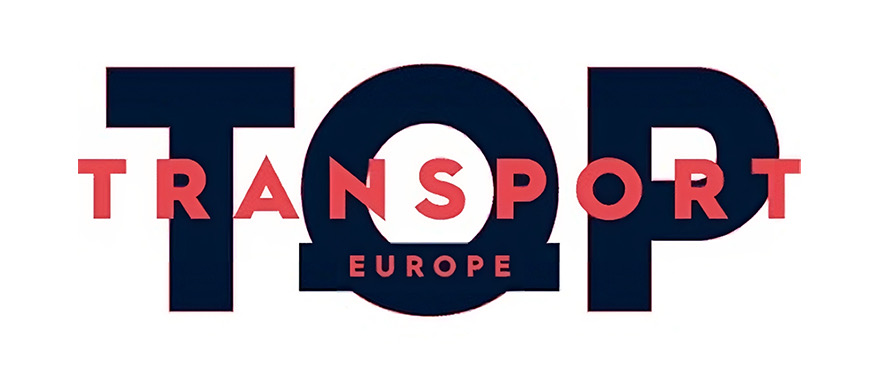Why Speed Defines the Market Today
If there’s one word that sums up today’s business climate, it’s speed. Products are developed and released faster. Customers expect service without delay. Competitors are quick to launch alternatives. And behind the scenes, supply chains stretch across multiple continents, making every move more complicated.
For companies, the challenge is clear: if you can’t deliver quickly and adapt to shifting demand, you’re at risk of falling behind. Yet speeding up isn’t as simple as shaving a few days off a shipment. True acceleration comes from rethinking how the supply chain works end-to-end. That means looking at lead times, production planning, logistics choices, and even the way teams communicate internally.
Interlog Group has been working with global organizations on these exact challenges. Through its Studies & Consulting services, the firm helps clients uncover where time is being lost, how to realign operations with real demand, and what steps will make the biggest impact on speed and resilience.
The Rising Stakes Around Time-to-Market
Think about how customer expectations have changed in the last decade. With same-day delivery available in retail, the idea of waiting weeks for a product feels outdated. Whether you’re selling consumer goods, industrial components, or technology, the expectation is the same: fast, reliable, and flexible delivery.
But customers aren’t the only factor. Supply chains themselves have become fragile. One late shipment from a supplier in Asia can hold up production lines in Europe or North America. Port congestion, strikes, tariffs, and geopolitical issues ripple across the system in ways that were easier to absorb in the past but are now critical risks. These factors have a bigger impact when the lead times are shorter.
And then there’s demand. It rarely behaves the way forecasts suggest and the slightest variation in demand has significant consequences upstream in the supply chain, known as the “bullwhip effect”. Consumer preferences change quickly, seasonal peaks come earlier or later than expected, economic shifts push demand up one month and down the next. For companies trying to match production to this moving target, the old models aren’t enough.
The result is simple: businesses need to move faster, but also smarter. Cutting time-to-market isn’t just about speed for speed’s sake—it’s about staying relevant and competitive.
Where Companies Get Stuck
Most organizations know they need to move quicker. The issue is figuring out how. Delays are rarely concentrated in one obvious place. Instead, they’re scattered: a supplier that’s slow to respond, a production line that isn’t flexible enough, customs procedures that take too long, or transportation routes that are outdated.
What makes things harder is the way decisions are often made. Procurement focuses on costs, production teams on efficiency, logistics on capacity, and sales on customer needs. Each group may be doing its job well, but when they aren’t working in sync, the overall system slows down.
Forecasting is another stumbling block. Many companies still rely on models that lean heavily on historical data. That worked in more stable markets, but in today’s environment it leads to mismatched supply and demand. The result is inventory sitting idle in one place while customers are waiting in another.
And finally, there’s a technology gap. Plenty of businesses have invested in systems, but they don’t always connect across departments or regions. Decisions get made on partial data, and by the time the full picture is clear, it’s often too late to act.
How Interlog’s Studies & Consulting Approach Solves the Problem
Interlog Group steps into this picture with a mix of structured analysis and practical consulting. The process usually begins with a full study of the supply chain. Every stage—from sourcing materials to delivering the finished product—is mapped out. Lead times are measured not just in theory, but in practice, with all the real-world delays factored in. This creates a clear diagnostic: where the time is being lost, what causes it, and which delays matter most to the end customer.
From there, the focus shifts to strategy. Interlog works with clients to build out scenarios. What if a key supplier misses deadlines? What if demand jumps by 20% in a month? What if shipping shifts from ocean to rail? These exercises aren’t abstract—they give businesses the ability to react in real time because the playbook has already been considered.
Another core piece is demand alignment. Rather than depending only on backward-looking forecasts, Interlog helps companies integrate real demand signals into planning. That could mean refining the sales and operations planning process, resetting safety stock levels, or adopting tools that better connect sales data with production schedules. The goal isn’t perfection. Forecasts will always be imperfect, it’s your responsiveness that moves the bar.
On the operations side, changes are often more hands-on. Interlog’s consultants might recommend diversifying the supplier base, redesigning transport routes, streamlining customs processes, or digitizing manual workflows. Every action is tested against financial impact, so improvements are not only faster but also cost-effective.
What makes this work is that Interlog doesn’t stop at strategy. Implementation support – training teams, embedding new processes, monitoring results – is part of the service. Change is difficult in any organization, and lasting improvements require more than a slide deck. Our practical implementation is the key to lasting improvement.
What the Results Look Like
The outcomes speak for themselves. A manufacturer working with Interlog saw delivery lead times drop by 25% after bottlenecks in supplier management and customs were addressed. A consumer goods company implemented new demand-driven planning and cut excess inventory by nearly 20%, while also avoiding stockouts during the busiest season. In technology, scenario planning made it possible for a client to switch suppliers midstream when shortages hit, keeping product availability steady while competitors were stuck in delays.
These aren’t isolated wins. They show that when time-to-market is treated as a strategic priority, and when studies lead to action, businesses can build supply chains that are both faster and more resilient.
Why Interlog?
There’s no shortage of firms offering supply chain advice. With modern technology, many firms can offer some of these services. What sets Interlog apart is the combination of deep specialization and practical execution, combined with our signature independence. We are not simply another carrier offering a simplified consultancy. We are a true Supply Chain Optimization provider with decades of experience across freight, logistics, auditing and optimization, the team brings a level of insight that comes from being embedded in the industry.
The approach is data-driven but never detached. Every recommendation is backed by analysis, but also tailored to the realities of the client’s industry and geography. And most importantly, Interlog stays with clients through implementation, ensuring that strategies don’t just sit on paper but deliver real results.
Interlog’s global reach also matters. Supply chains today rarely stop at one border, and having a partner that understands the nuances of multiple regions makes a difference. Whether navigating customs in Europe, sourcing in Asia, or distributing in North America, the experience is there.
Where Companies Can Start
For businesses looking to accelerate time-to-market, the first step is often the simplest: visibility. Mapping out the current supply chain, with a focus on real lead times, provides the clarity to see what’s slowing things down.
From there, the priority is usually alignment—getting procurement, operations, logistics, and sales to work toward the same goal rather than optimizing separately. Integrating demand signals into planning creates responsiveness, while scenario planning builds resilience.
Of course, these steps take resources and expertise. That’s why many organizations bring in outside support. With Interlog, they gain both the structured analysis to pinpoint issues and the consulting expertise to fix them.
Turning Speed Into Strategy
At the end of the day, speed isn’t just an operational detail. It’s a strategy. Companies that deliver quickly and adapt to demand shifts are the ones that outperform. Those that don’t, struggle to keep up.
Interlog Group’s Studies & Consulting services give businesses the tools and guidance to shorten lead times, align production with real demand, and build supply chains that can withstand uncertainty. It’s not about chasing speed for its own sake—it’s about making speed part of a company’s competitive edge.
For organizations ready to move faster and smarter, the path is clear: take a closer look at your supply chain, find out where the time is really going, and partner with experts who know how to turn analysis into action.
Ready to Move Faster?
📌 Interlog Group’s Studies & Consulting team can help you uncover delays, align production, and transform your supply chain into a driver of growth.


